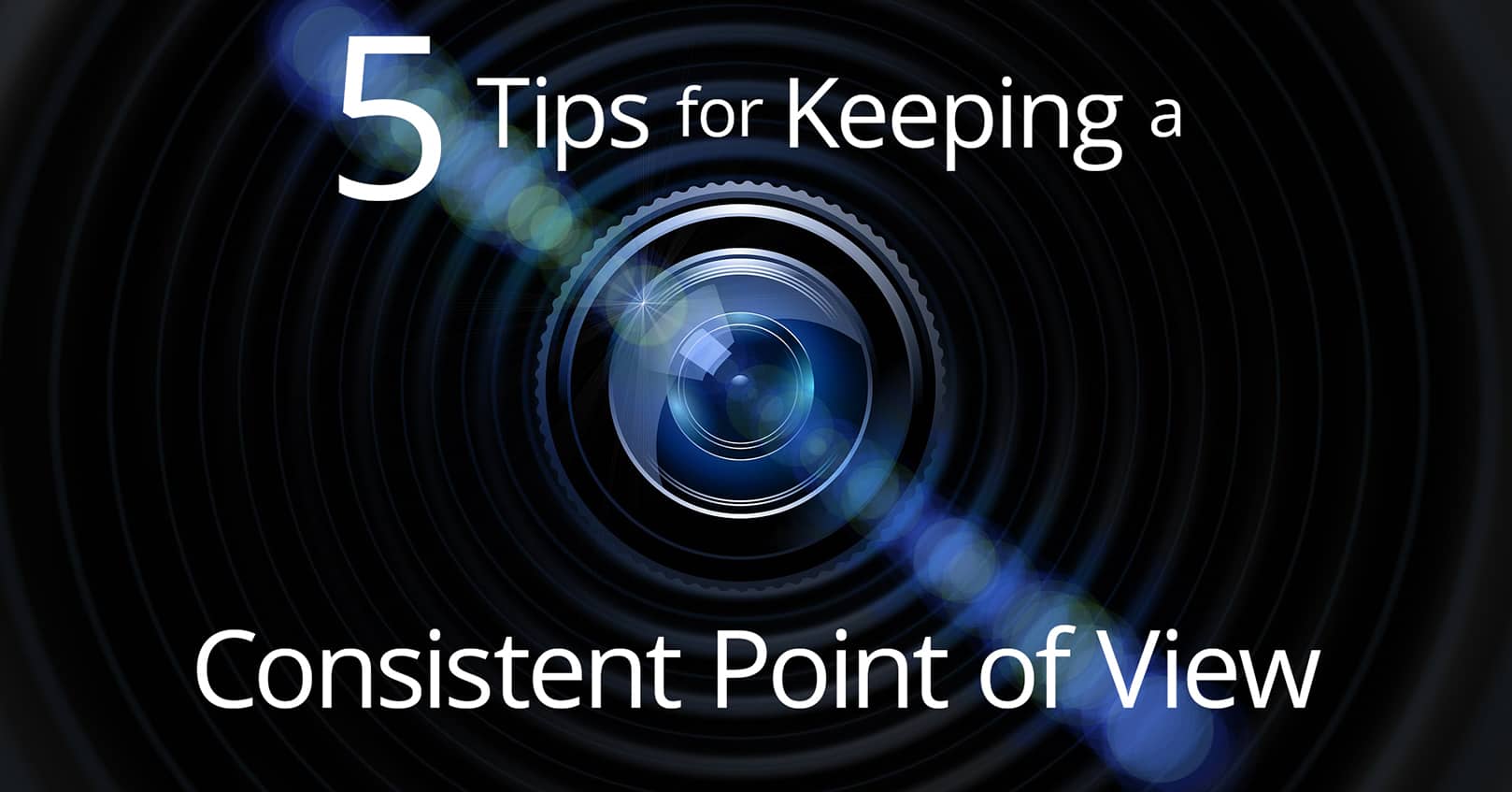
Fiction is usually either written in first-person point of view (I, me) or third person limited point of view (she, he, where each scene is only told from the view of one character at a time instead of multiple characters). These two methods are the best way to get into a character’s head and immerse the reader in the story. But sometimes writers break point of view, which confuses the reader and disconnects them from the story you’re trying to tell—and that’s the last thing you want because it makes it too easy for a reader to put down your book permanently. Here are 5 tips for keeping a consistent point of view.
1. Choose One Point of View Per Scene
Even if you’re using third person point of view, we recommend avoiding using an omnipotent point of view, which makes it difficult to get close to a character. Instead, choose the viewpoint character for the scene and write the scene from their perspective. If there is something your character could not know, then do not write it. Do not head hop, or jump from one point of view to another, within one scene.
Breaks POV: Kara rubbed her aching elbow, regretting her decision to read while walking. John watched her, wondering what she’d done.
Stays in POV: Kara rubbed her aching elbow, regretting her decision to read while walking. She looked up to see John watching her with a raised eyebrow, and she sheepishly dropped her hand.
2. Keep the Camera Behind the Viewpoint Character
Pretend you have a camera following the viewpoint character. To keep a consistent point of view, the scene can only show what your character sees. If something is happening behind them, then they can’t see it, so you shouldn’t write about it. Maybe they hear something, though, then turn around to see what is happening. Just keep that camera pointed in the right direction.
3. Remember That Your Characters Aren’t (Usually) Telepathic
Often writers will try to explain how characters other than the viewpoint character in that scene feel. But unless your character is telepathic, they can’t know how the other characters feel, so you can’t explain their feelings. Instead, you could describe the other characters’ actions to show their feelings.
For example, let’s say my viewpoint character in this scene is Kara, and she’s speaking with John.
Breaks POV: John shook his head angrily. (Kara doesn’t know he’s doing it in anger.)
Stays in POV: John surged to his feet, his eyebrows drawn and his mouth tight.
Breaks POV: John fell silent, hurt at her abruptness.
Stays in POV: John fell silent, and she could see the hurt on his face. (Be careful not to overuse this, though, as most people aren’t actually good at reading faces, and some emotions can’t be guessed from a person’s expression. Another way to say this would be: John fell silent, hurt apparent on his face.)
4. Don’t Describe the Viewpoint Character
Your viewpoint character can’t see themselves, so writing things like, “She looked like she hadn’t gotten any sleep,” or “Her long, brown hair framed her heart-shaped face” is breaking point of view. Instead, you could write, “She rubbed her eyes, wishing her fears hadn’t kept her up half the night,” or “She pushed her long, brown hair from her face.” (This is often overused, though, so be creative!)
5. Never Write “He/She Could Not Have Known…”
Writing “she could not have known that…” clearly breaks POV, yet we see it all the time in fiction. This construction is usually an inexperienced way of foreshadowing and can irritate the reader.
Do you have questions or additional tips about keeping a consistent point of view? Let us know in the comments below!















Comments